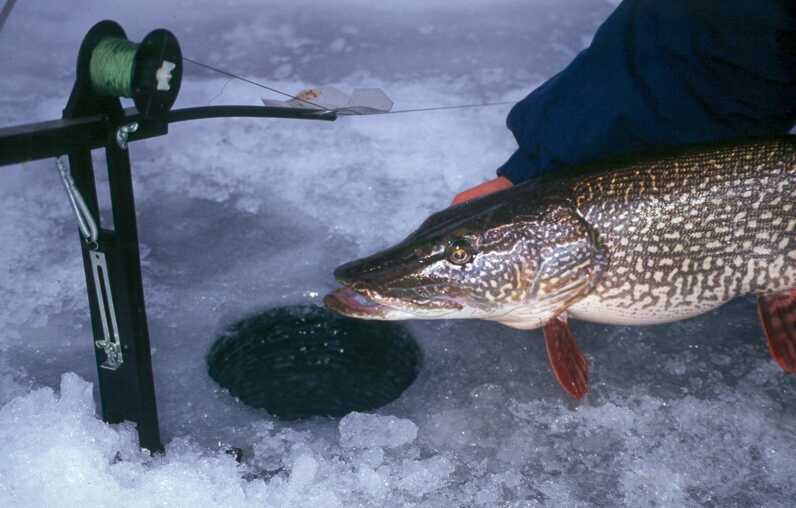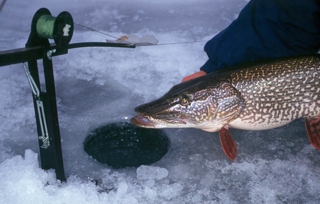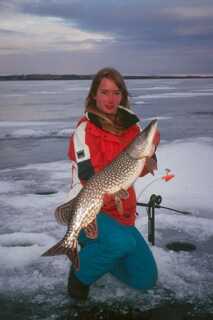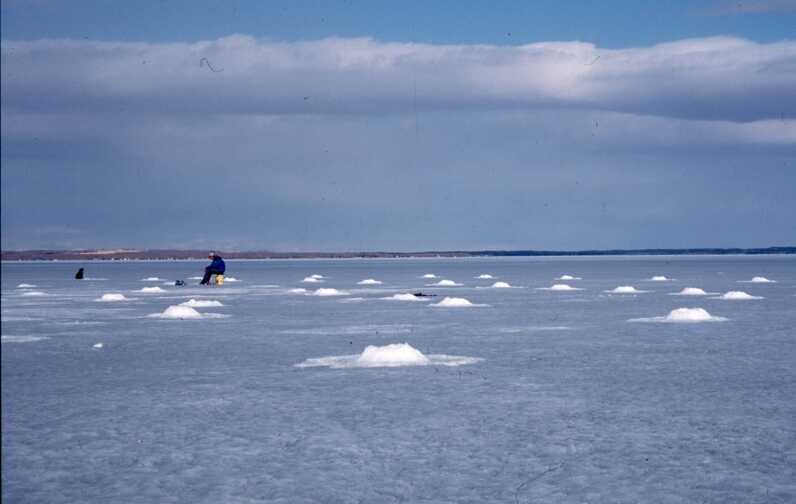To consistently catch fish through the ice requires versatility, foresight and a willingness to go that extra mile. Fish bite less in winter for the simple fact that they are cold blooded. That is, their body metabolism rises and falls with the rise and fall in water temperature. So, when it's winter and the water is near freezing, these fish are cold and have the sluggish metabolism to match. With a low metabolism they eat less because they need less. It's just the way it is. That said, these fish still eat and in doing so, present to us the opportunity to catch them.


There are still days on the ice when the fish are on an all out frenzy and the action is non-stop. But those days are the exception - not the rule. The average day will see a dependable morning bite then sporadic action through the day followed by a dependable evening bite. The bite is usually better if the conditions are overcast, but not always.
Since I enjoy my weekends and like to sleep in, I'll often forgo the morning bite and hit the ice around noon. This sets up a leisurely pace to the outing. I'll get to the lake early afternoon and drill a pattern of holes for the evening action. When it comes to this style of fishing, be it for trout, whitefish, pike or others the trick is to figure out where the fish will feed. If you find the food, you will find the fish. To take it one step further, find the deep to shallow water travel route fish take to get to the food and find lots of fish. That's because the fish will continue to use this route throughout the day and they'll use it heavily as evening approaches. Targeting fish travel corridors is what I've made a habit out of doing, and by doing so I've been rewarded handsomely. Once I have chosen an area where I figure fish will migrate through then the work begins.
I do all the drilling right at the beginning with my StrikeMaster power auger so I disturb the fish only once. I'll often drill twenty or more holes, perforating the zone. This gives me choice. When the drilling is done I should have deep to shallow and side to side coverage. Then, depending on the number of anglers fishing, we strategically space out setlines and jig out other holes to give us the most coverage. If the bite becomes localized, we simply move our lines to the hot zone and get in on the fun.
When the bite happens, it's obvious. There will be little to no activity and as the afternoon progresses rods will start going off. The bite has started. Some days the bite is strong and can go hard for a couple of hours. Other days the bite comes and goes in a scant 15 to 20 minutes. It depends on the fish.At Pigeon Lake there is this sharp underwater drop that many know about off the provincial park. The walleye and to a lesser degree, the pike use this drop off as their access route to the shallow flats where they hunt minnows and whitefish.Along this drop there are turns and undulations, however subtle, and we try to set up on or close to these underwater valleys that lead up onto the shallow feeding flats
At Calling Lake there is this massive inside turn by the radio tower. Most everyone that fishes Calling knows about the radio tower. I set shop up there with my friends Derek Nyrose and Larry Kindraka and had one of my best walleye days ever. I'm not talking big numbers, because we only caught 13, but the size was stunning. Every fish but two were over five pounds and the largest three were 7 pounds, 7 pounds and 9.6 pounds. It was unreal. We just happened to hit the spot and because of it, we were the benefactors of some amazing fishing.
At Star Lake there is this underwater hump the fish like to push up on and feed. It's pretty much directly across from the boat launch. I've spent evenings on the edges of this spot and literally hammered the rainbows.All these spots have that connection of deep water nearby, a travel route to the shallows and food when they get there. Targeting these areas is worthwhile and when you find the fish travel path, you can be certain that you'll be seeing the fish that use them too









